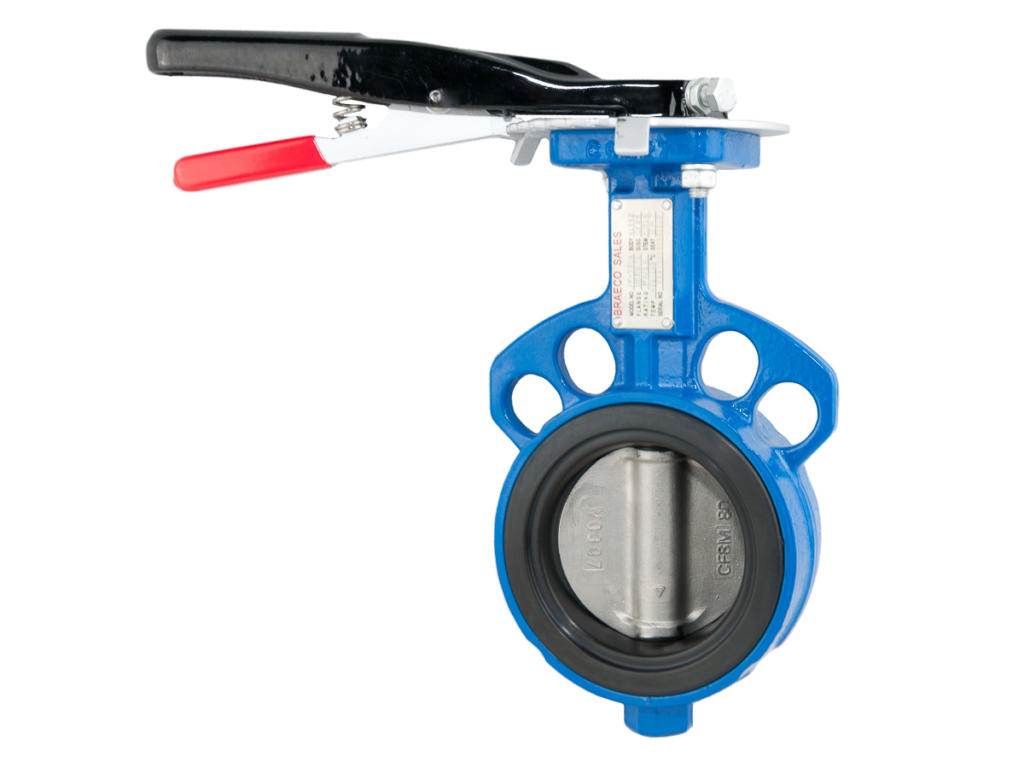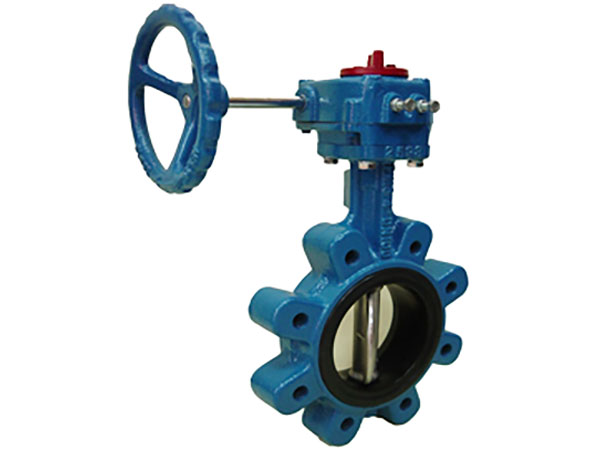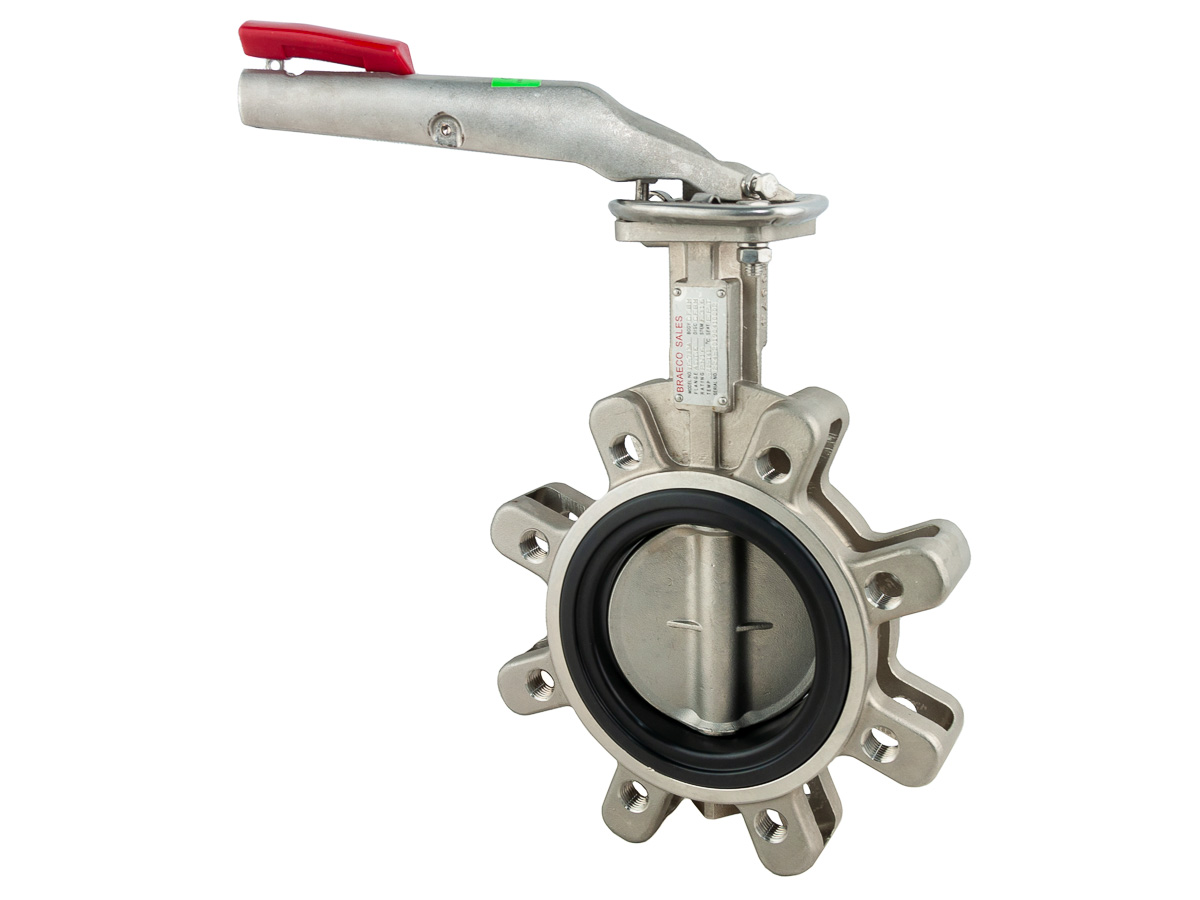




| Size Range | 1.5" – 48" / DN40 – DN1200 |
| Temperature Range | -4°F to 400°F / -20°C to 204°C |
| Pressure Rating | 150psi (10bar) 1.5" – 48" / 230psi (16bar) 1.5" – 24" |
| Body Style | Wafer / Lug / Flange |
| Body | Cast Iron, Ductile Iron, Carbon Steel, 304SS, 316SS |
| Disc | 304SS, 316SS, Aluminum Bronze, Nylon 11 Coated 316SS, Nylon 11 Coated Ductile Iron |
| Seat | EPDM, Buna N, Viton, Hypalon, Silicone, Neoprene |
| Stem/Shaft | 410SS, 304SS, 316SS, 17-4 Ph SS |
Lug
Wafer
Double Flanged
Butterfly valves are typically made from a variety of materials, including:
The choice of material depends on the operating conditions, such as temperature, pressure, and corrosiveness, as well as the desired cost, weight, and longevity of the valve.
The disc of a butterfly valve is one of the critical components that helps to regulate the flow of fluids. Different materials are used for the disc based on the type of fluid, pressure, temperature, and other environmental factors. The most common materials used for butterfly valve discs are:
The choice of disc material depends on the specific application requirements, such as temperature, pressure, corrosiveness, and compatibility with the fluid being transported.
The shaft of a butterfly valve is a critical component that transfers the torque from the valve handle or actuator to the disc, allowing it to rotate and open or close the valve. The material used for the shaft affects the strength, durability, and corrosion resistance of the valve. Common materials used for butterfly valve shafts include:
The seat of a butterfly valve is the surface that seals against the disc to prevent fluid from leaking through the valve. The material used for the seat affects the performance, durability, and corrosion resistance of the valve. Common materials used for butterfly valve seats include:
The material selected for the seat of a butterfly valve has an impact on its performance, durability, and resistance to corrosion. The type of material used will depend on various operating factors such as temperature, pressure, and the presence of corrosive substances, as well as the required performance, cost-effectiveness, and longevity of the valve.
Actuators are devices that control the movement of a butterfly valve, allowing it to open and close as needed. The following are common types of actuators used with butterfly valves:
The choice of actuator will depend on the operating conditions, such as temperature, pressure, and corrosiveness, as well as the desired level of automation of the valve.


| Face to Face | API 609, ISO5752 |
| Design & Pressure | ISO 5208, AWWA C504, ASME B16.54 |
| Inspection & Testing | ISO 5208 |
| Mounting | ISO 5211 |
| EX Certificate | ATEX 94/9/EG Group II, Category 2 GD |
| ABS Certificate | ABS Steel Vessel Rules: 1-1-7/7, 4-6-2/5.11 |